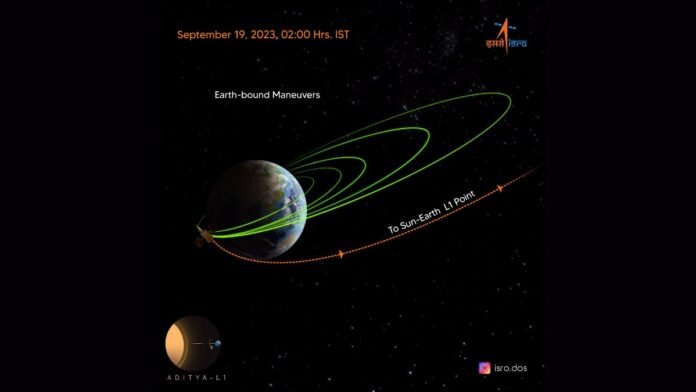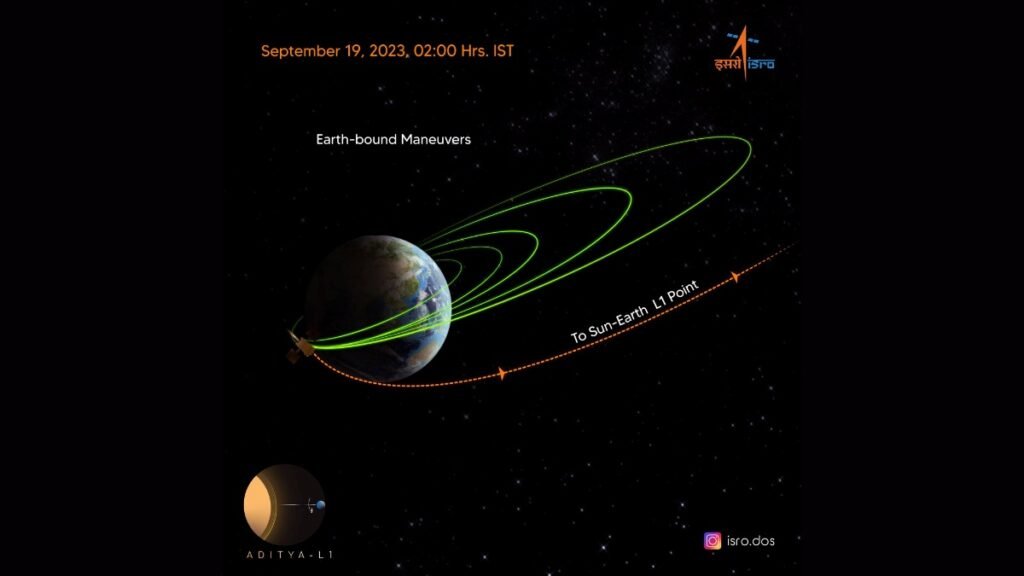
New Delhi: ISRO has achieved another milestone in its solar mission, Aditya L1, by successfully performing the Trans-Lagrangian Point 1 Insertion (TL1I) maneuver in the early hours of Tuesday (September 19), the space agency said. This maneuver marks the departure of the spacecraft from Earth’s orbit and the start of its 110-day journey to the L1 point, a balanced gravitational region between the Earth and the Sun.
Aditya L1 was launched on September 2 at 11:50 a.m. from the Satish Dhawan Space Center in Sriharikota by the PSLV-C57 rocket. The spacecraft was placed in a 235 km x 19500 km orbit around the Earth after 63 minutes and 19 seconds of launch. Then, its orbit was gradually increased four times by firing its thrusters.
The L1 point is one of the five Lagrange points in the Earth-Sun system, where the gravitational forces of the two bodies balance each other. This allows a small object, such as a spacecraft, to maintain a stable position relative to the two large bodies. The L1 point is about 1.5 million km from the Earth and offers an uninterrupted view of the Sun.
Aditya L1 is India’s first space-based mission to study the Sun and its various phenomena, such as solar flares, coronal mass ejections, and magnetic fields. The spacecraft carries seven payloads, including instruments for imaging, spectroscopy, particle detection, and magnetometry. These payloads will provide valuable data on the Sun’s activity and its impact on space weather and Earth’s climate.

ISRO has also announced that one of the payloads, the Supra Thermal and Energetic Particle Spectrometer (STEPS), has started collecting scientific data since September 10, when it was activated at a distance of 50,000 km from the Earth. STEPS is part of the Aditya Solar Wind Particle Experiment (ASPEX) payload, which measures solar wind particles such as electrons, protons, and heavier ions. These particles can affect the communication and navigation systems on Earth and in space.
Aditya L1 is expected to reach its final orbit around the L1 point in January 2024, after completing several mid-course corrections along the way. The spacecraft will then begin its nominal mission life of five years, during which it will observe the Sun continuously and transmit data to Earth. Aditya L1 is a landmark mission for India as it will enhance our understanding of the Sun and its influence on our planet and beyond.






































